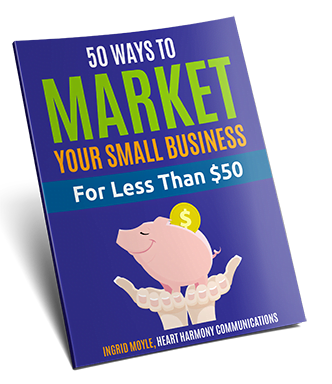Writing letters and running a business go hand in hand. No matter the reason for your letter, here are nineteen tips to help you create an effective business letter.
Writing letters and running a business go hand in hand. Letters can be anything from sending quotes, welcoming new clients, promoting your goods and services, chasing up unpaid bills, through to managing your employees.
Business letters can be email or printed on letterhead, but effective business letters all have a few things in common.
Business letters that get results are clear, understandable and inspire people into action. They create a feeling of what it is like to work with your business as well as leave a lasting impression in the minds of the readers.
No matter the reason for your letter, here are nineteen tips to help you create an effective business letter.
Planning
Plan your communication
Dashing off a letter in just a few minutes is a bad idea. You need to think through your communication before you commit pen to paper to get the best possible results. Remember professional writers can spend weeks on just one letter to get it right.
Start by working out what action you want the reader to take after reading the letter, and then consider all the core pieces of information you need to include to help lead the person to that action.

Work out the intended audience or reader
Think about the people reading your letters. What is their likely literacy level? Are they going to be reading your letter in email or printed form? Are they super busy or are they likely to pore over every detail? What questions will they be thinking about when they read your letter?
You need to write for your audience. When in doubt, keep your language simple and jargon free.
Check names and details
A person’s name is incredibly important to them, so make sure you have spelt it correctly. If you don’t know the person’s name, then you can use the person’s title or a descriptor of them. For example, “Dear Colleague”, “Fellow IT Geek”, “Dear Renovator”, “Dear Editor”.
Also, double check any place names, street addresses, phone numbers, websites or business names you refer to in your letter. It is very easy to mix up letters or numbers and cause a world of frustration for readers.
Work out your length – Short isn’t always better
In sales letters, long copy is often more effective than short letters. Long letters help give all the facts and highlight all the important selling features of the product or service. The key here is don’t ramble – keep every point relentlessly building on the previous point rather than just word padding.
Plan a logical flow or sequence in your letter
Many letters jump around, with different ideas and thoughts scattered across the page. When planning what you want to say, clump similar ideas together. Create a flow leading the reader through your letter from one idea to the next. Our Copywriting 3-step Master Formula will help you to plan an effective communication flow.
Writing Tips
Remember the greeting
When you meet someone for the first time, generally you don’t just launch into conversation. You say hello first. The same with your letter. Traditionally we start our letters with “Dear Name”. But it doesn’t always have to be that way. You can use “Hi”, “Hello”, “Welcome” or a host of other words to start your letters off.

A word on gender
Gender neutral pronouns “they” and “their” rather than “his” or “hers” are now acceptable in grammar and solve a raft of common business communication problems.
From a business perspective, it solves the challenge of clumsy language such as “If your team member is considering our product, then he/she should consider XYZ first.”
It also stops the problem of trying to squeeze in provisos at the beginning of your letters of “In this document, please read every instance of the use of the words he and him, to include women.”
Read more about the use of gender neutral pronouns.
All letters need headlines
Headlines grab attention and help provide context for the rest of the communication. Make sure your headline is interesting and logical. Help people understand why you are writing to them. Headlines can be as simple as “Welcome” through to “How did we do?”
Add in sub-headlines
Break the letter up with sub-headlines to help those people who scan letters for key points rather than read every line. Sub-headlines also help create flow and link ideas throughout your letter.
Include a strong call to action
This sounds simple, but it is the most common mistake we see in business letters. You need to tell people loudly and clearly the action you want them to take as a result of the letter. Do you want them to call you, send you something, buy something, file the letter for future reference? Be specific, and you will increase your response rate.
Most letters could use a PS.
PS’s are the second most read part of a letter (after the headline). Use your PS to reiterate key points you want to make.
Editing
Edit your letter
Writing is only one part of the puzzle. You need to go back and edit your letter. Read it back for flow, ease of understanding and readability.
Read the letter out loud to see where you stumble over words or where you need to take a breath in the middle of a sentence. Take out padding words and shorten sentences for easier understanding.
Make sure that no sentences can be misinterpreted or have another meaning.

Punch up the words
Sizzling words make a huge difference in readability and getting people to act. Once you have written your letter, go back and check if there are any words that are too soft and need spicing up.
Prune the flowers & the jokes
One common error people make (particularly if English is their second language) is being too flowery in their language. Too much over the top language such as “requesting your esteemed business” can put readers off.
Flowery language is not the same as powerful language. When in doubt prune back on the flowers.
Also, humour is a very individual thing. What you find hilarious may be deeply offensive to the reader. In professional correspondence, it is safer to leave the jokes out.
Check your spelling
Spelling matters and poorly spelt letters that are full of grammatical errors send a certain impression about you and your business.
If you are like me and your brain thinks faster than you type, it is very easy to miss words out in total (and swear they were there). Go back and read the letter backwards – it helps to find the missing words and misspelled words. You can also use a tool such as Grammarly to help find and fix typos and spelling errors.
Designing
Keep your design simple
Business letters need a simple, easy to read design. Using lots of different fonts increases the reading difficulty and can overload the message. Keep your different font styles and sizes to a maximum of two.
Make sure you use the same font style and sizes across all your communication to reinforce your corporate brand.
Also, don’t be afraid of white space or try and cram too much information onto a page. Allow your words space to breathe.

Date your letter
Always include a date on your letters if you are going for a print and not an electronic version.
Check your attachments
If you say you are attaching a document, then make sure it is attached before you seal or send the letter.
Many people type the letters “Att” or “Enc” at the bottom of a printed letter after the signature to remind themselves there is an attachment mentioned in the letter.
Templating
Save it as a template
If there is a chance that you may need to write a similar letter in the future, save a copy of the letter or email as a template. You will save time and ensure consistency of communication.
One word of warning, remove all identifying names or information in the letter (this includes the letter document properties) as you may unwittingly share confidential information with other clients.
You may also end up addressing the letter to the wrong person (remember I mentioned the importance of getting the name right!)
Read how to inspect Word documents for hidden properties.

Conclusion
Writing an effective business letter doesn’t have to be hard. If you take the time to plan your thoughts, polish your words and double-check your details, you will create a powerful letter that will deliver strong results for your business.





